About Aikido & The Aikido Center
Aikido & The Founder
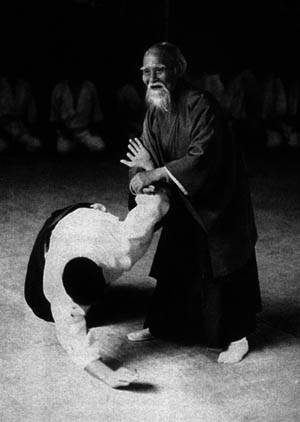
The meaning of the word Aikido is the way (do) to harmony (ai) with energy (ki). Aikido is a Japanese non-competitive martial art. Aikido, which roots are found in ancient tradition, is a relatively new martial art that was founded in the first half of the 20th century by grandmaster Morihei Ueshiba. As would be expected of a martial art that has its roots rooted in martial technique, Aikido includes a variety of lethal techniques that are meant as a means of defense against an attacker. Over the years Aikido evolved from a martial technique, which emphasizes self defense and effectiveness, to a martial art, which emphasizes the “way”.
During Aikido training we practice techniques that can serve as self defense should the need arise. But Aikido goes one step further, and invites each practitioner to learn much more than that: the “Do”’ the “Way”. The “way” teaches us to demand less of others and more of ourselves, to control ourselves and better ourselves. The more one progresses along the “way”, the more one understands that the “fighting”, that used to be fighting against others, turns into a private war that all of us wage against our own weaknesses and fears. This is every human’s war for enhanced awareness and self improvement.
The fact that there are no competitions in Aikido is no coincidence. According to the founder, who prohibited holding competitions, the goals of Aikido are “harmony” and “mutual prosperity”, a state in which both sides build each other.
This is why in Aikido, we train in cooperation with our partner, and try to execute the techniques in a harmonic manner, going with the flow of their movement and without hurting them. During practice we change the roles between us, thus improving our physical fitness, strengthening each other and improving our flexibility, while learning how to work in cooperation, and mutual help.
Suganuma Sensei
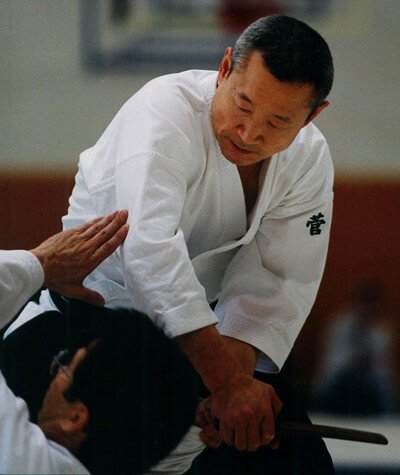
Suganuma Sensei was born in Fukushima prefecture in Japan. After graduating from high school he began studying at a university in Tokyo. During his studies he practiced pole jumping, but had to give up the sport because of an illness. Sensei recuperated and re-enrolled to another university in Tokyo. During that time, in 1963, he started studying aikido at the Aikido club at the university in which he studied. The teacher in charge of the university club was Tamura Sensei (who later taught Aikido in France for many years).
In 1967 Sensei was accepted as an Uchi-Deshi (“Inner Pupil” or “Direct pupil”) of O-sensei, the founder. Suganuma Sensei is one of the last Pupils who had the privilege to learn directly from the founder.
In 1970, a year after the founder’s passing away, Suganuma Sensei was sent by Doshu (The head of Aikikai at the time) to Kyushu, Japan’s southern island, to spread Aikido on behalf of the Honbu-Dojo. In1970, there were only 20 Aikido practitioners in Kyushu.
In 1981 he meets Umeda Zenji, the Zen teacher, and becomes his pupil. Since then, for decades, Sensei practices Zazen and teaches Aikido. Nowadays Sensei teaches a Zazen class once a month in his central Dojo in Japan.
In 1997 Suganuma Sensei visited Israel for the first time to conduct an Aikido seminar, and since then he has visits the country to give seminars on a regular basis. Sensei has visited Israel 8 times so far (the last time he visited was in July 2011).
Today Sensei heads “ShoheiJuku Dojo”, a non-profit organization that includes more than 110 different Dojos, with over 3,000 students. Sensei gives regular seminars worldwide, in Holland, Norway, China, Canada, and of course in Israel. Over the years, Sensei has published books about Aikido, Zen, health, and correct mental attitude. In addition he has published several professional video films for the learning and instruction of Aikido.
Sensei holds a rank of 8th Dan (the highest rank given today around the world).
Sensei holds a position of director in the supreme management of the All Japan Aikido Federation.
Sensei is married, has three children and a grandson.
Suganuma Sensei's videos
The Aikido Center of Israel - Nisshin-Kan
The Aikido Center of Israel (Nisshin Kan) is a center dedicated to the study and practice of Aikido ('dojo' in Japanese). The center practices Aikikai Aikido (the main style of Aikido around the world). The Aikido center is a “grandson” of the founder: Master Suganuma was a direct student of the founder, and we are directly affiliated to Master Suganuma's dojo in Fukuoka, Japan, and practice Aikido in the style taught there. The Aikido center was founded in 1997, by Sensei Eli Lerman, 6th Dan, who studied directly under Master Suganuma in Japan for seven years, and who now heads the center. Over the years, the Aikido Center of Israel has grown, and now operates several branches in the Sharon area (Kfar Saba, Ra’anana, Hod Hasharon and Netanya-Nordia).
Eli Lerman - Founder & CEO

“I arrived in Japan in 1989 as part of the traditional “after the army” trip, and as part of a soul search. My declared target was “to study Aikido”, even though I have never practiced before, and as a matter of fact, knew very little about Aikido. The original reason for my arrival in Japan was a combination of exposure to Steven Seagal films, in which he demonstrates the effective side of the art, and of the fact that studying a martial art has been a childhood dream for me. Looking back, it is clear to me I was a 23 years old kid, who came with an intention to master the art within three months, and then to return to Israel. I never said it aloud, but I have to admit those were my thoughts.
During my search I arrived at Fukuoka, a city with a million and a half residents. I came to Suganuma Sensei’s Doo to watch a class. More than anything else, the class looked like a dancing lesson, and seemed to have no connection to the Steven Seagal films. After the class I sat with sensei in his small office. It happened more than 30 years ago, but both of us, sensei and me remember our first meeting. I remember the twinkle in his wise eyes, and thinking to myself “This is the man from whom I wish to learn”.
Sensei remembers the torn jeans trousers I wore! As time passed I learnt that in Japan, the dress code mainly shows the respect one has to the person with whom he meets. Coming to a meeting wearing torn jeans does not show much respect.
I asked Suganuma’s permission to become his pupil, and he gave it. In the first few months I practiced daily. My day consisted of a lesson (sometimes two lessons a day), doing my laundry, eating and sleeping. After a few months it became evident that my plan to become a master within three months will not be realized. I began studying Japanese in a proper school while continuing the aikido lessons, and working.
Eventually, I ended up living and studying in Japan for six and a half years. As well as studying Aikido I got a first degree at law from the Kyushu University (I attended with the Japanese students, and studied in Japanese). While I was in Japan I studied Aikido in the dojo, as well as in the University Aikido club. When asked what my area of expertise in law school was, I reply: the law faculty, the department of Aikido studies.
Today, over 30 years after my arrival in Japan, it is clear to me that my travelling to Japan and meeting with Sensei were not a matter of chance. That encounter changed my life and had such a profound influence on me to the extent that I cannot imagine how my life would have looked like without it. During this period of about 30 years my understanding of Aikido has changed. Part of the change occurred thanks to the texts Sensei used to read during the classes. These are mostly short texts, but being short in a distinct Japanese way, they slowly found a path into my soul, and changed me, as well as the way I experience the world. Like drops of water carving rock, these words shaped me. Of course the words alone would not suffice, and the combination of the physical training in the classes had its effect.
Aikido – the way to harmony with energy – is very elusive. What is the way? Where does one search for it? These are the questions that occupied and still occupy my mind, throughout all these years of practicing Aikido. I would not dare to presume the ability to apply the high ideals of which Aikido speaks: Harmony, being "here and now" and so on. These are supreme ideals, and I try to best of my humble ability to come closer to fulfilling them. I am painfully aware of how far away I am from putting them into practice.
I believe Aikido is a great tool. A tool with which I have made, and continue to make large and important changes in my life: healthy and recreational physical activity, a better understanding of the way in which I communicate with my surrounding, changes in my attitude, assertiveness and so on. For me, Aikido is a compass, a school and a laboratory in which life itself is researched.
I have not reached enlightenment, therefore I can promise no miracles. But since I have had the privilege to be exposed to such a positive and meaningful tool, a positive tool that has improved my life very much, I consider sharing it with those interested a privilege as well as a duty.
Wishing you a new day!
Eli Lerman
Posts by Eli Lerman

One Thing – All The Energy!
This Year I decided to write the words “One thing – all the energy!”, in the different Dojos.These words were the moto of a leader
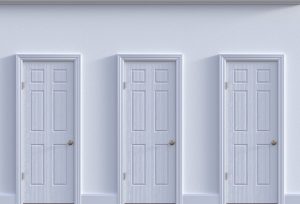
Rin-Ki-O-Hen
This is a sentence from the Chinese classic Texts, which I learned from Suganuma Sensei many years ago. It means: “To match the reaction to the changing circumstances”.

Exercising the Gratitude Muscle
Suganuma Sensei used to read short passages in the Dojo written by great teachers. One of his favourite teachers was Nakamura Tempu Sensei.
Timeline
1963
Suganuma Sensei starts Aikido training
In 1963, Morito Suganuma Sensei started practicing Aikido at the Aikido club of the university he graduated from in Tokyo. The university's Aikido club's head teacher at the time was Tamura Sensei (who later taught Aikido in France for many years).
1967
Suganuma Sensei becomes the Founder's Uchi-deshi (direct-student)
In 1967 Suganuma Sensei was accepted to become the Founder's (O-sensei) Uchi-deshi (direct student or apprentice). Suganuma Sensei is one of the few last student who got to learn directly from the founder of Aikido.
1969
The Founder of Aikido, Morihei Ueshiba pass away
1970
Suganuma Sensei is sent on behalf of the Hombu Dojo (the Aikido's headquarters in Tokyo) to spread Aikido in the south of Japan
In 1970, a year after the Founder of Aikido passed away, Suganuma Sensei is sent by Doshu (the head of Aikido at the time) to Kyushu, the southern island of Japan, to spread Aikido on behalf of the Hombu Dojo. In 1970 the Aikido population in Kyushu was consisted of 20 people.
1981
Suganuma Sensei starts learning Zazen meditation
In 1981 Suganuma Sensei meets a Zazen teacher by the name of Umeda Zenji and becomes his student. Since then Suganuma Sensei started teaching Zazen in parallel to Aikido, and he now teaches a Zazen class once a month at his main dojo of his Japan.
1989
Eli Lerman starts learning Aikido at Suganuma Sensei's dojo
In 1989 Eli Lerman arrived in Japan as part of a trip in Asian and decided to start taking Aikido classes instructed by Suganuma Sensei.
1997
The Aikido Center of Israel is founded
In 1997, after returning to Israel, Eli Lerman founded The Aikido Center of Israel Nisshin-Kan, as part of the chain of international dojos directly connected to Suganuma Sensei's dojo in Japan.
2017
The Aikido Center of Israel celebrates 20 years of activity

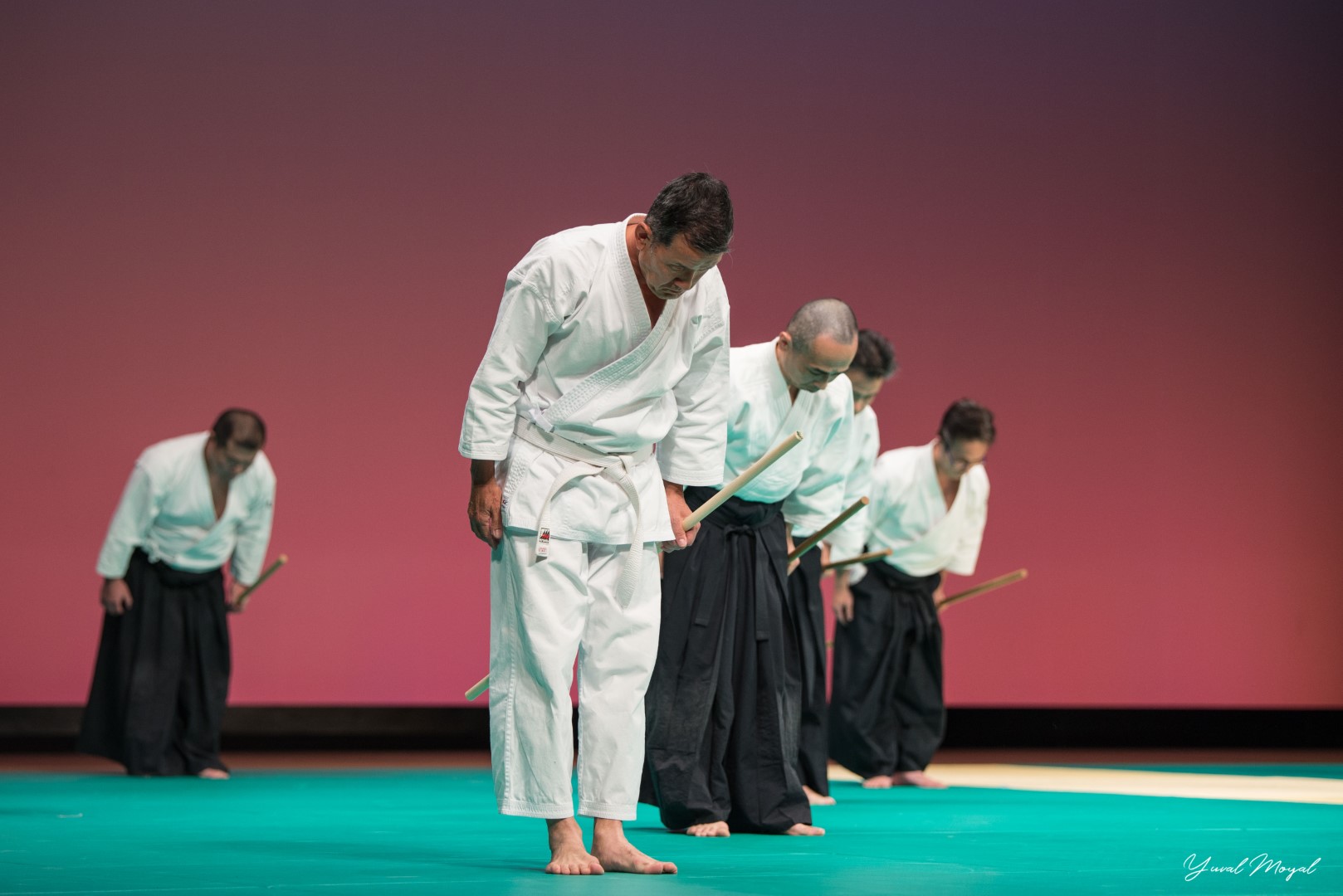

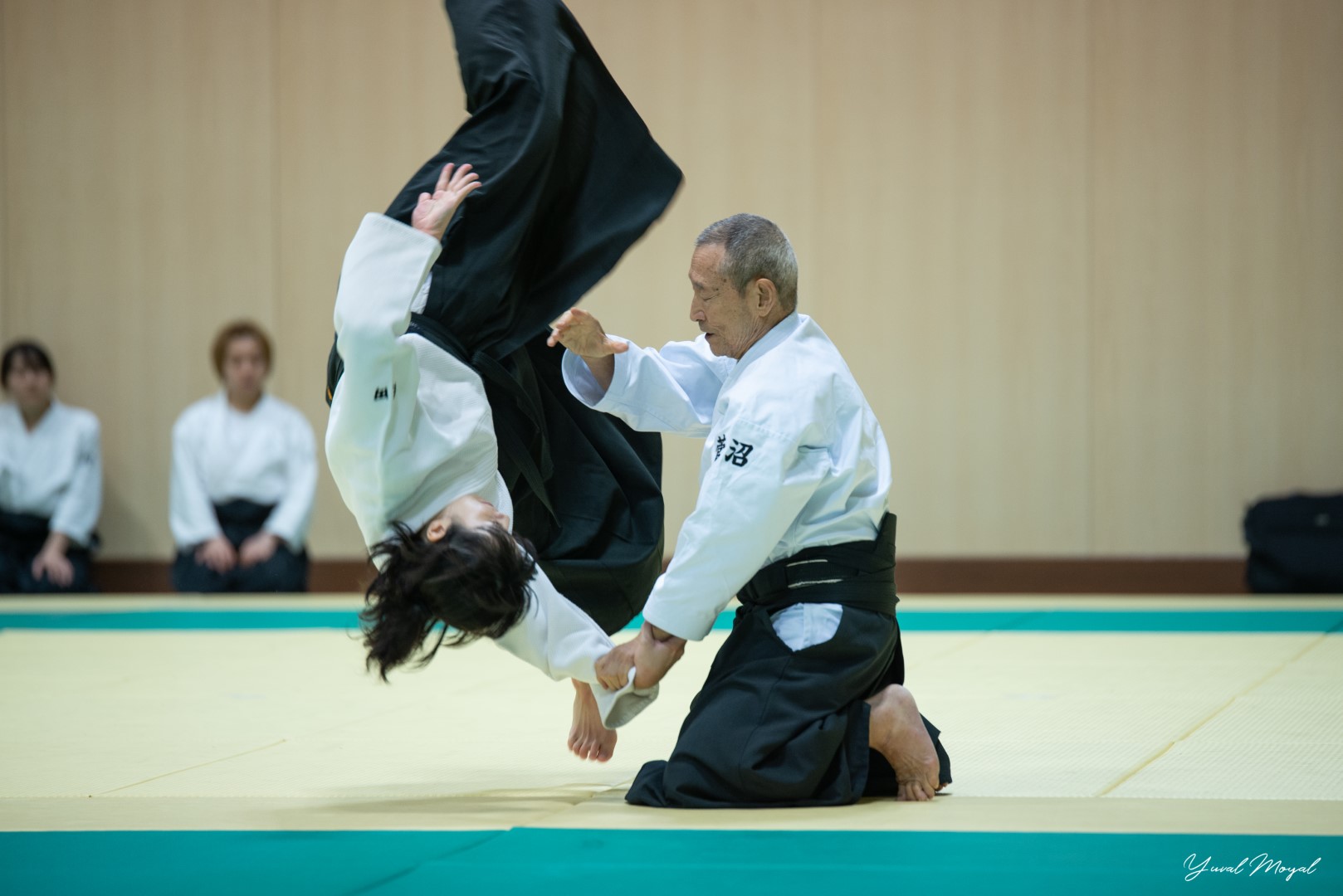
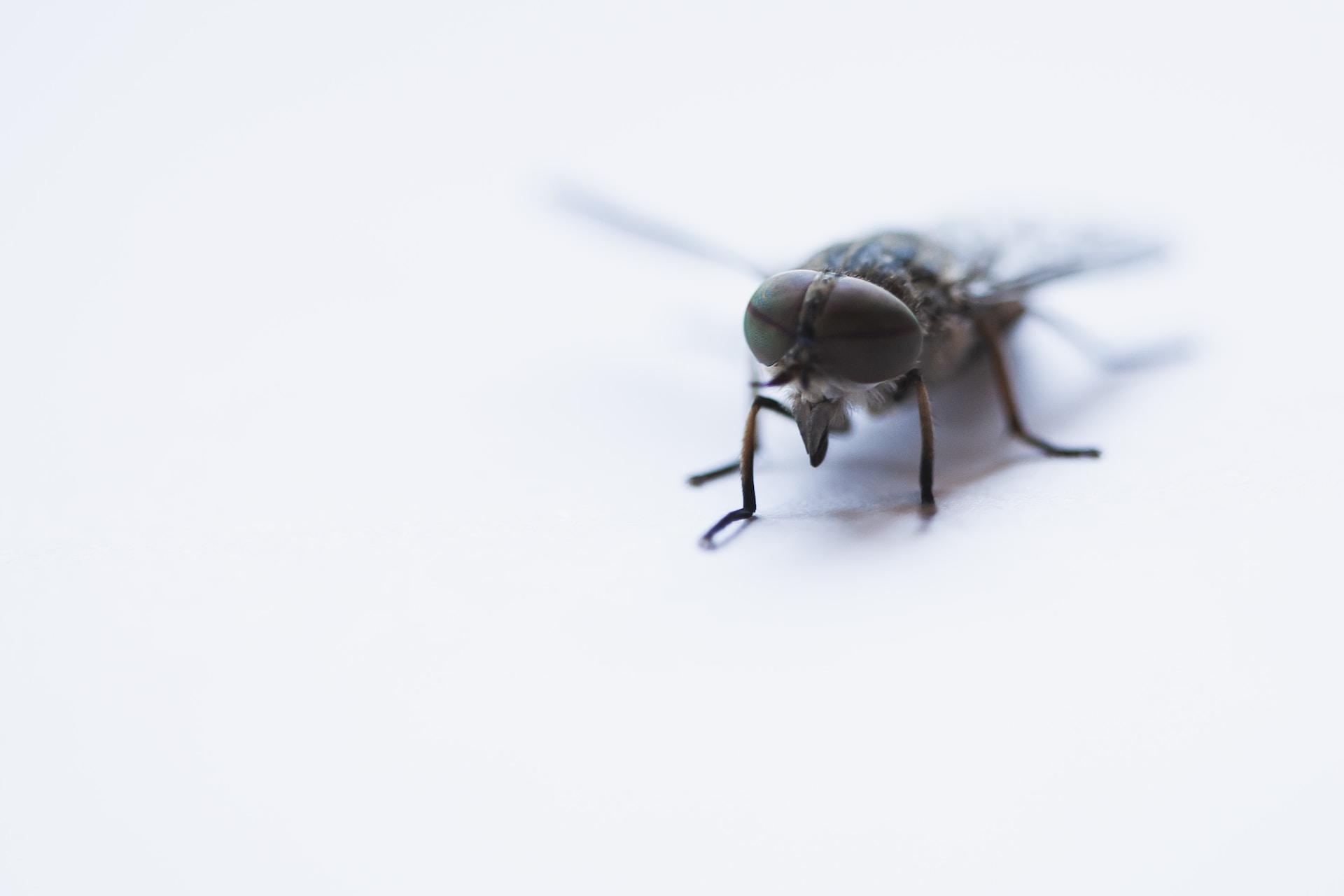

תגובות אחרונות